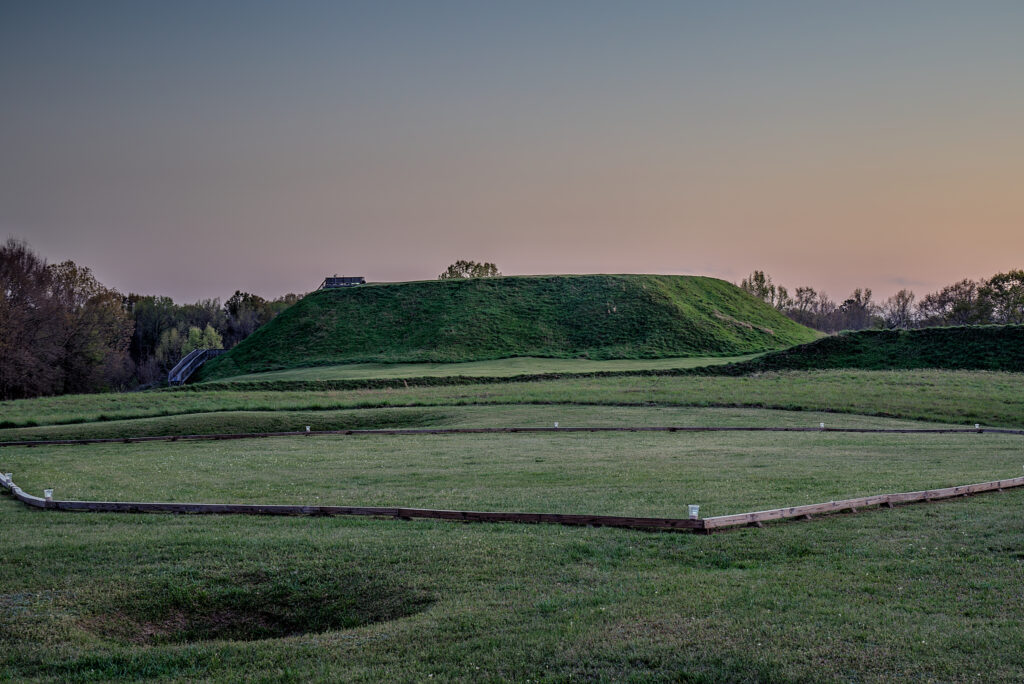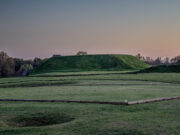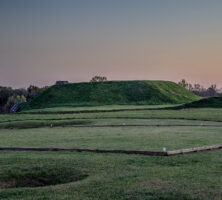In 1936 archaeologist Arthur R. Kelly located the remains of a fortified trading establishment in the midst of a Creek Indian archaeological site on the Ocmulgee National Monument. Although historical documentation is lacking, it appeared to be an English trading house established while the Creek Indians were living in the area of present-day Macon during the period 1690-1718. The post is believed to have been burned in the Yamasee War of 1715. Excavations have turned up all sorts of artifacts, including axes, clay pipes, beads, knives, swords, bullets, flints, pistols, and muskets.
The remains of the trading post consisted of two buildings surrounded by a five-sided stockade with posts set in a narrow ditch (the stockade wall of the trading post is now outlined by concrete bumpers) and further enclosed on four sides by a larger moatlike ditch. The stockade enclosed an area of approximately one-quarter acre. A depressed roadway, believed to be part of the old Creek trading path, leads up to the compound ruins.

Photograph by Dsdugan / CC0
Excavations of the trading house also have revealed a number of Native American graves, with European trade goods primarily from English sources. Archaeological evidence indicates that the trading house was not present continuously throughout the Creek period. Archaeologist Gregory Waselkov suggests that the fortified settlement probably dates to the period after 1702, when English-backed Creeks from this area attacked Spanish missions in present Florida. Expecting reprisals, they built fortifications but probably did not need them after the Creeks destroyed the Apalachee missions in and around present Tallahassee, Florida, in 1704.
Archaeologist Carol Mason argues that the remains are from the Hitchiti town of Ocmulgee, the residence of English trader James Lucas. Based on his interpretation of the Herbert Map of 1725, archaeologist Marvin Smith suggests that the complex may be the town of Kasihta. While the exact identification of the town and trading establishment is controversial, it may well be the origin point for English-backed Creek raiders who destroyed the Spanish missions in present Florida in 1702 and again in 1704.






